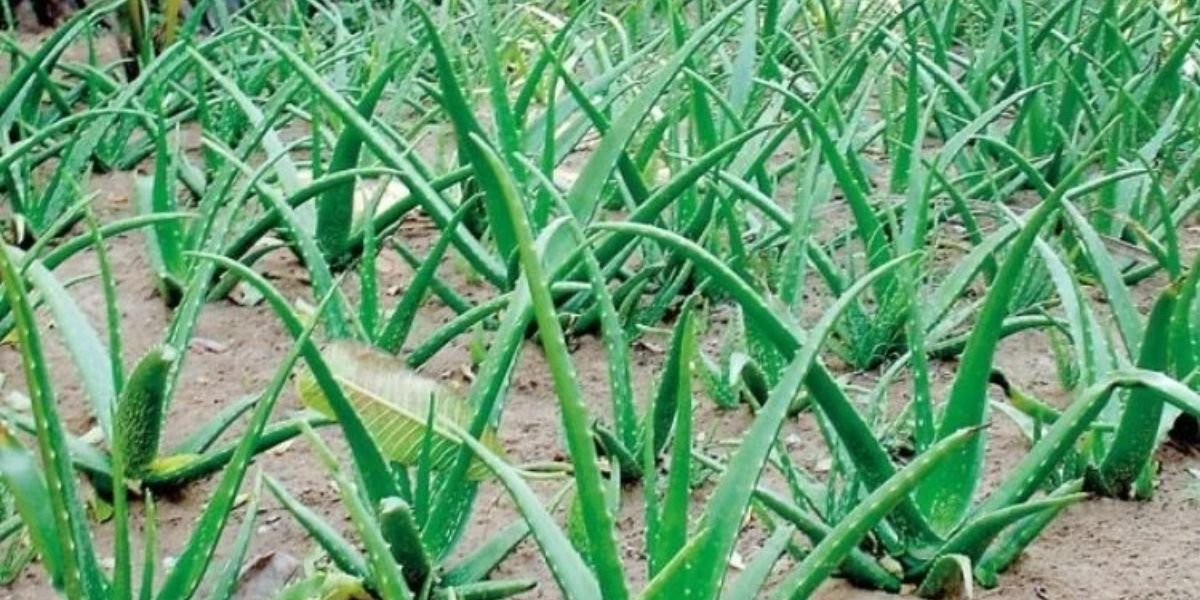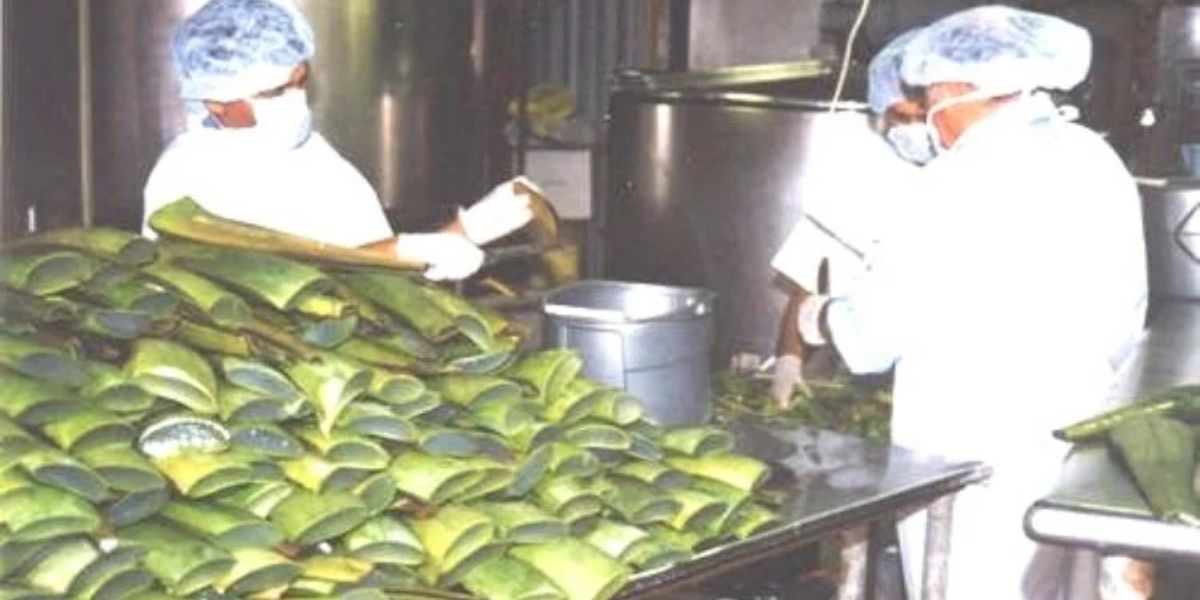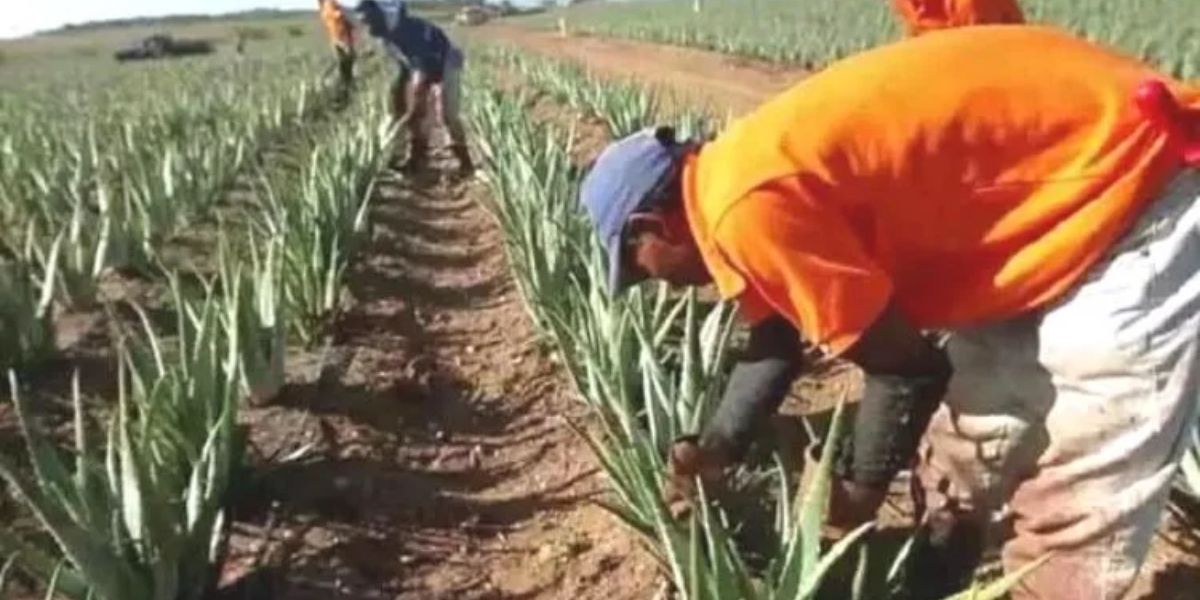Aloe Vera Farming is good source of income on waste land
Aloe vera with medicinal properties is always in demand as a raw material for herbal and cosmetic products, no disease and no danger from animals
Fertile, infertile, barren, drought-prone or marshy – whatever the land may be, there is something or the other for everyone in there on the earth for the farmers. If a farmer has hard work and dedication, he can create prosperity through farming. Keeping these things in mind, if aloe vera is cultivated then it is guaranteed to earn good profit, because aloe vera does not require much irrigation, fertilizers and pesticides. Aloe vera is also known by names like Ghritkumari, Gwarpatha, Kwargandal.
Earning from aloe vera
Aloe vera is a wild medicinal plant that grows easily even on dry land. It is neither afflicted by any disease or insect nor eaten by animals. Aloe vera plant starts giving regular income after one year of transplanting. That’s why aloe vera farming can be a boon even for wasteland. In commercial cultivation of Aloe vera, the cost of planting 10-11 thousand plants per acre comes to 18-20 thousand rupees. From this, 20-25 tonnes of aloe vera is obtained in a year, which is sold at the rate of Rs 25-20 thousand per tonne.
There is bound to be variation in yield in Aloe vera depending upon the nature of the soil and the species of the plant. The yield of Aloe vera increases in the second and third year as compared to the first year, whereas in the fourth and fifth year the yield decreases by 20-25 percent. That’s why gradually old plants should be replaced with new plants.

Benefits of aloe vera
Aloe vera is an attractive and ornamental, stemless, succulent plant with fleshy leaves. Its leaves are its stem and its fruit. Its leaves are lanceolate, thick and fleshy. Aloe vera juice has a bitter or astringent taste. Its colour is green or greenish-grey. Some varieties also develop white spots on the surface of the leaves. Small thorns also grow on the edges of the leaves. Yellow flowers also come on them in summer.
The farmers cultivating aloe vera get a good price for it also because it is used in making many products. Cosmetics and many Ayurvedic products are made from Aloe vera leaves. Its demand for herbal and cosmetic products is not only regular but also increasing continuously. That’s why the companies buying Aloe vera get it cultivated even after making an agreement or contract with the farmers. Apart from this, a good income can also be earned by setting up a processing unit of Aloe vera.
There are countless products in the market including aloe vera cream, face wash, face pack, shampoo, toothpaste, hair oil. Its glutinous pickles, vegetables, juices and oils are also popular. It is mostly used in skin related problems. Apart from this, it is useful in stomach, bile, liver, jaundice, stones, fever, cough, diabetes and eye diseases. That is why it is used in allopathic medicines. Elements such as mannas, anthraquinones and lectins found in aloe vera significantly reduce the level of lipids in the blood.

Aloe vera farming – avoid waterlogging
Aloe vera likes hot and dry climate. Aloe vera goes to Kathua (dormant state) in winter. In these cold areas, it is grown in greenhouses only. While cultivating aloe vera, keep in mind that aloe vera should be protected from excessive irrigation or waterlogging. Aloe vera cultivation can be started anytime except during extreme winters. Aloe vera does not require irrigation during the rainy season of July-August. Saplings should be planted at a distance of about one and a half feet by making ridges in the field prepared by deep ploughing.
Commercial cultivation of aloe vera
Aloe vera can be planted even months after it is uprooted from the ground. If a small part of its stem is buried in the ground, it becomes a plant in a few weeks. That’s why in commercial farming, instead of cutting the tuber of aloe vera and sowing it, plants are prepared and planted, because aloe vera grows rapidly and starts yielding within three to four months.
If the transplanted plants are about 4 months old and 20-25 cm high with 4-5 leaves, then their leaves become cutable soon and start giving income. By the way, the aloe vera plant can be two to three feet high and by cutting the leaves at regular intervals, new leaves grow rapidly.

Irrigation and harvesting in aloe vera cultivation
Apart from light irrigation at the time of sowing or transplanting, water should be given to Aloe vera only as per requirement. Too much water slows down its growth. But after harvesting, aloe vera must get water once. In fertile soil, where the yield of aloe vera is available in about 8 months, infertile fields are ready for harvesting in 10-12 months. Generally, there should be a gap of two months between two pickings. Fully developed leaves should be plucked and young and developing leaves should be discarded.
Varieties of aloe vera
According to agricultural scientists, Aloe vera is originally a plant from North Africa. But today around 300 varieties of it are found all over the world. Out of these, 284 species have medicinal properties up to 15%, then 11 species are also poisonous, while 5 species have 100% medicinal properties. Aloe vera of IC 111271, IC 111269 and AL-1 hybrid species is grown in India in every region. For the cultivation of aloe vera, a good variety of plant should be chosen.

Where to sell the produce?
Seeing the earning of aloe vera, farmers also cultivate it on a large scale. Such farmers get good prices by entering into direct agreements with pharma and cosmetic companies. In contract farming, the plants are also provided to the Aloe vera farmers by the company itself. These companies also buy the produce.
New and small farmers should also make direct coordination with hundreds of buyers spread across the country in time. Efforts should be made to take help from agricultural experts regarding this. Direct agreements can be made with big companies like Export India.com, E-world trade fair.com, Go for world business, Alibaba and Amazon through internet also. If the farmer wishes, he can also earn good profit by setting up a processing plant to make aloe vera juice.
Contact us: If farmers want to share information or experiences related to farming with us, then they can do this by calling us on the phone number 9599273766 or by writing an email to [email protected] or by sending your recording. Through Kisan of India, we will convey your message to the people, because we believe that if the farmers are advanced then the country is happy.



